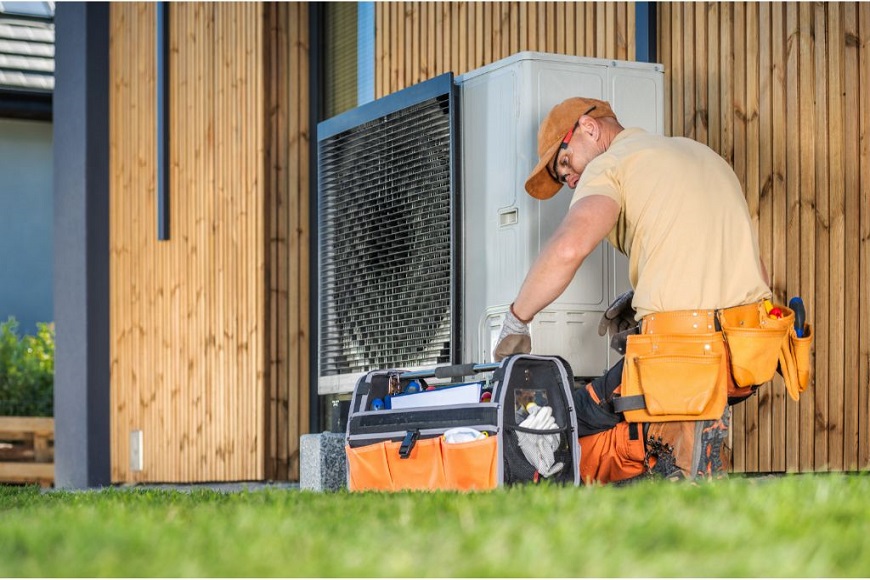How much thought have you put into the heating and cooling system in your home? Perhaps not much, until those hot summer months roll in, and you feel like you’re walking into a blazing oven when you enter your home. Or when winter arrives, and you need to layer up just to move around the house! Today, we’ll delve into innovative trends and technologies that are revolutionizing the ducted heating and cooling industry.
Heating and cooling systems have been an integral part of our homes for decades. In recent years, however, there’s been a radical shift towards making these systems more energy-efficient, comfortable, and eco-friendly. Now, with climate change increasingly becoming a concern, it is high time to turn our attention to these innovative solutions that do more than just regulating our home temperatures.
In this blog post, we undertake a deep dive into the world of ducted heating and cooling systems, exploring recent innovations, the advantages and disadvantages that come with, and how they fit into the architecture and design of our homes.
Why the Shift Toward Innovative Heating and Cooling Systems?
Adapting to a changing environment and higher energy costs are not the only motivators behind the shift towards innovative heating and cooling systems. The rise in demand for advanced, energy-efficient, and easy-to-use home amenities has pushed manufacturers to come up with smarter systems. These innovations are also characterized by sustainable practices and efficient energy use, directly contributing to the fight against climate change.
Preferences of homeowners are shifting. They want systems that are aesthetic yet do not compromise on performance. In response, the market has seen an influx of cutting-edge HVAC technologies which offer a blend of function, style, and sustainability.
Builders and architects are not left behind; modern home designs now incorporate innovative heating and cooling solutions from the onset. This is evident in the construction of energy-efficient homes, where the focus is not just insulation, but also on how well the HVAC system integrates with the home’s design.
What are the Recent Innovations in Ducted Heating and Cooling Systems?
One cannot talk about HVAC system innovations without mentioning Zone Controlled Systems. These allow homeowners to control the temperature in different zones within their homes. Another noticeable trend is the use of smart thermostats, which are becoming more complex and interactive.
Ductless heat pumps, also called mini-split systems, are also on the rise. They are efficient and provide both heating and cooling services. Using multiple indoor units, they allow temperature control in individual rooms, improving comfort, and reducing energy use.
Another significant innovation is the Hybrid Heating System. This system uses both a gas furnace and an electric heat pump, allowing homeowners to switch between gas heating and electric heating depending on the weather conditions.
The Pros and Cons of Innovative Systems
As with everything, these innovative systems come with their advantages and disadvantages. They offer increased energy-efficiency, lower utility costs, enhanced comfort, and are environmentally friendly. Many of them also provide added convenience with smart features such as remote control and automatic scheduling.
However, the major downside to these systems is their high upfront costs. Not to mention, installation of certain technologies could require significant modifications to existing homes. Some people may also face a learning curve in operation due to their high-tech nature.
How Are These Innovations Changing Architectural Design?
Incorporating these innovative HVAC technologies is resulting in a paradigm shift in architectural designs. Architects are challenged to build houses where HVAC systems work synergistically with home designs for overall improved efficiency.
This is leading to the rise of energy-efficient housing, in which architects consider the heating and cooling needs right from the design phase. Architectural designs now prioritize natural ventilation, insulation, and the right placement of windows and ducts to boost HVAC efficiency.
The Future of Ducted Heating and Cooling Systems
The future of ducted heating and cooling in Melbourne looks bright. With the rise of smart homes, AI integration in HVAC systems is becoming more common, enhancing efficiency and convenience. Additionally, as sustainable living gains momentum, we can expect more eco-friendly alternatives to emerge, making climate control both smarter and greener.
Conclusion
The HVAC industry is evolving, and not just technologically, but also in terms of its relationship with the environment and our evolving lifestyle requirements. It is clear that these innovations are not just random technology advancements but are instead deliberate attempts to make our homes more comfortable, energy-efficient, and eco-friendly.
While the initial investment on some of these innovative systems might be high, they offer long-term returns by lowering utility costs. In addition, these technological advancements offer green solutions to heating and cooling, leaving minimal carbon footprints and promoting sustainability. We are undoubtedly in the era of intelligent and green heating and cooling. Homes that do not adapt to these changes might soon find themselves outpaced in the future housing market.
Therefore, as we strive for improved home comfort, we should also consider the larger global impact of our choices. Let’s embrace these progressive shifts in the HVAC industry, and move towards building smarter, greener homes together.

